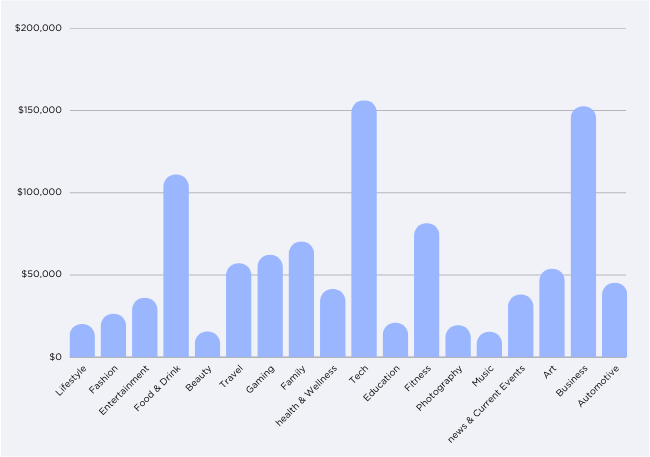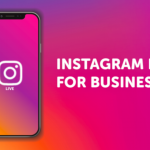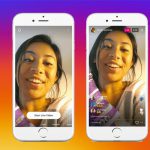In today’s digital age, social media has become an indispensable tool for communication, connection, and entertainment. But it’s also evolved into a powerful platform for content creators to showcase their talents, build a loyal following, and earn a living. With the right strategies and platforms, individuals can transform their passion for creating into a profitable venture.
Navigating the Social Media Landscape
The world of social media is vast and ever-changing, with new platforms and features emerging regularly. Each platform has its unique strengths, demographics, and monetization opportunities. For content creators to maximize their earnings, it’s crucial to understand the nuances of each platform and tailor their approach accordingly.
YouTube: The Video Powerhouse
With over 2.56 billion monthly active users, YouTube reigns supreme as the go-to platform for video content. Its vast audience and diverse content categories provide ample opportunities for monetization. Content creators can earn through ad revenue, sponsorships, merchandise sales, and fan funding.
Unlocking Monetization Opportunities on YouTube:
1. YouTube Partner Program (YPP)
The cornerstone of YouTube monetization is the YouTube Partner Program (YPP). Once accepted into YPP, creators can earn revenue through various channels, including:
- Ad Revenue: Creators receive a share of the ad revenue generated from displaying ads on their videos.
- Channel Memberships: Fans can subscribe to a creator’s channel for exclusive benefits and perks, providing creators with recurring income.
- Super Chat and Super Stickers: Viewers can purchase highlighted messages and animated stickers to get their messages noticed during live streams and in video comments.
- YouTube Premium Revenue: Creators earn a portion of the subscription fees paid by YouTube Premium members who watch their content.
To qualify for YPP, creators must meet specific requirements, such as having at least 1,000 subscribers and 4,000 watch hours in the past 12 months.
2. Brand Partnerships
Collaborations with brands are a lucrative monetization strategy for creators. Brands seek to leverage creators’ influence and reach to promote their products or services. Creators can partner with brands through sponsored videos, product placements, social media campaigns, and influencer marketing platforms.
3. Merchandise Sales
Merchandising provides a tangible way for creators to connect with their fans and generate revenue. Creators can design and sell branded apparel, accessories, or other items to their loyal followers. Platforms like YouTube Merch and Shopify provide tools for creators to manage their merchandise sales directly from their YouTube channels.
4. Fan Funding Platforms
Platforms like Patreon and Ko-fi allow creators to receive direct financial support from their fans. Fans can pledge monthly subscriptions or make one-time donations to support the creator’s work. These platforms are particularly well-suited for creators who produce exclusive content or offer behind-the-scenes access to their creative process.
5. Licensing and Distribution
Creators can license their content to production companies, media outlets, or educational institutions for a fee. Additionally, they can distribute their content through syndication networks to reach a wider audience and generate revenue from advertising or subscription fees.
TikTok: The Short-Form Sensation
TikTok has taken the social media world by storm, capturing the attention of Gen Z and millennials with its short-form, engaging videos. The platform’s Creator Fund, brand partnerships, merchandise sales, and virtual gifts offer lucrative monetization options for creators.
Monetizing Your Content on TikTok:
1. TikTok Creator Fund
The TikTok Creator Fund is a program that allows creators to earn money based on the views and engagement of their videos. To qualify for the fund, creators must have at least 10,000 followers, have at least 100,000 views in the past 30 days, and be at least 18 years old.
2. TikTok Creator Marketplace
The TikTok Creator Marketplace is a platform that connects brands with creators for sponsored content opportunities. Creators can browse available campaigns, apply for those that align with their brand and audience, and negotiate partnerships with brands directly.
3. TikTok Live Gifts
During TikTok Live streams, viewers can send creators virtual gifts, which can be redeemed for real-world money. Gifts come in various forms, such as roses, lions, and yachts, with each gift having a different monetary value.
4. TikTok Shopping
TikTok Shopping allows creators to integrate ecommerce directly into their TikTok profiles. Creators can showcase and sell products via their TikTok videos, TikTok Live, and the product showcase tab.
5. TikTok Affiliate Marketing
Creators can partner with brands to promote their products or services through affiliate marketing. Creators can earn a commission for each sale generated through their unique affiliate link.
6. TikTok Promote
TikTok Promote allows creators to turn their organic content into ads, directly in the app. Creators can choose a target audience, set a budget, and boost their videos to reach a wider audience and potentially attract more followers and engagement.
7. TikTok Consulting and Services
Creators can leverage their expertise and experience by offering consulting services to other TikTokers, brands, or businesses. This could involve providing social media strategy, content creation guidance, or influencer marketing services.
8. TikTok Merchandise
Creators can sell branded merchandise, such as apparel, accessories, or digital products, to their fans. This can be a great way to monetize a loyal following and build a stronger brand identity.
9. TikTok Tips and Donations
Creators can enable the ability to receive tips and donations from their viewers directly on their TikTok profiles. This allows fans to show their appreciation and support for the creator’s work.
10. TikTok Brand Partnerships
Creators can partner with brands for long-term collaborations, going beyond sponsored posts or product placements. These partnerships could involve creating exclusive content series, developing branded merchandise, or hosting live events.
Instagram: The Visual Storytelling Platform
Instagram‘s focus on captivating visuals and storytelling makes it an ideal platform for content creators in photography, fashion, design, and lifestyle. Sponsored posts, affiliate marketing, product sales, and exclusive content subscriptions are effective monetization strategies.
How to make money on Instagram:
1. Instagram Branded Content Partnerships
Partnering with brands is a lucrative monetization strategy for creators. Brands seek to leverage creators’ influence and reach to promote their products or services. Creators can collaborate with brands through branded posts, product placements, social media campaigns, and influencer marketing platforms.
To identify and secure brand partnerships, creators can showcase their work effectively on their Instagram profiles, engage in relevant niche communities, and utilize influencer marketing platforms to connect with potential brand partners.
2. Instagram Creator Marketplace
The Instagram Creator Marketplace is a platform that connects creators with brands seeking collaboration opportunities. Creators can create a profile showcasing their work, target audience metrics, and desired brand partnerships. Brands can browse creator profiles and directly reach out to collaborate on campaigns.
3. Instagram Shopping
Instagram Shopping allows creators to seamlessly integrate product sales into their profiles. Creators can tag products in their posts and stories, enabling viewers to directly purchase items without leaving the Instagram app. This feature is particularly beneficial for creators who promote fashion, beauty, or lifestyle products.
4. Instagram Fan Subscriptions
Instagram Fan Subscriptions provide a direct way for creators to generate recurring income from their loyal followers. Fans can subscribe to a creator’s profile for exclusive benefits, such as behind-the-scenes content, live streams, or early access to new posts. This feature is well-suited for creators who produce exclusive content or offer unique experiences to their fans.
5. Affiliate Marketing
Affiliate marketing involves promoting products or services of other companies and earning a commission for each sale generated through a unique affiliate link. Creators can promote products that align with their niche and interests, recommending them to their audience through their Instagram posts, stories, or bio links.
Facebook: The Social Media Giant
Facebook, with its massive user base, offers a wide range of monetization options for content creators. Ad breaks in Facebook videos, sponsored posts, product or service sales, and fan funding through Facebook Stars are all viable revenue streams.
Harnessing Facebook’s Monetization Potential:
1. Facebook In-Stream Ads
Facebook In-Stream Ads allow creators to monetize their videos by displaying pre-roll, mid-roll, or image ads within their content. Creators earn a portion of the ad revenue generated based on viewer engagement. To qualify for in-stream ads, creators must meet specific criteria, such as having at least 10,000 followers and 10,000 video views in the past 30 days.
2. Facebook Stars
Facebook Stars is a virtual gifting feature that enables viewers to show their appreciation for creators’ content by purchasing stars and sending them during live streams and in eligible videos. Creators receive a portion of the revenue generated from stars.
3. Facebook Branded Content Partnerships
Collaborating with brands is a lucrative monetization strategy for creators. Brands seek to leverage creators’ influence and reach to promote their products or services. Creators can partner with brands through branded posts, product placements, social media campaigns, and influencer marketing platforms.
4. Facebook Fan Subscriptions
Facebook Fan Subscriptions provide a direct way for creators to generate recurring income from their loyal followers. Fans can subscribe to a creator’s profile for exclusive benefits, such as behind-the-scenes content, live streams, or early access to new posts. This feature is well-suited for creators who produce exclusive content or offer unique experiences to their fans.
5. Affiliate Marketing
Affiliate marketing involves promoting products or services of other companies and earning a commission for each sale generated through a unique affiliate link. Creators can promote products that align with their niche and interests, recommending them to their audience through their Facebook posts, stories, or bio links.
Twitch: The Gamer’s Paradise
Twitch has become the hub for gamers to stream their gameplay and connect with their fans. Content creators can earn through subscriptions, donations, sponsorships, merchandise sales, and affiliate marketing.
Unleashing the Monetization Potential of Twitch:
1. Twitch Partner Program (TPP)
The Twitch Partner Program (TPP) is the cornerstone of Twitch monetization. Once accepted into TPP, creators can earn revenue through a variety of channels, including:
- Ad Revenue: Creators receive a share of the ad revenue generated from displaying ads on their live streams and videos-on-demand (VODs).
- Subscriptions: Fans can subscribe to a creator’s channel for exclusive benefits and perks, providing creators with recurring income.
- Bits: Viewers can purchase Bits, virtual items that can be used to cheer on creators during live streams and in chat. Creators receive a portion of the revenue generated from Bits.
- Merchandising Sales: Creators can sell branded merchandise, such as apparel, accessories, and digital goods, directly through their Twitch channels.
To qualify for TPP, creators must meet specific requirements, such as having at least 500 concurrent viewers, 7 unique broadcast days, and 3,000 channel views per month.
2. Brand Partnerships
Collaborating with brands is a lucrative monetization strategy for creators. Brands seek to leverage creators’ influence and reach to promote their products or services. Creators can partner with brands through sponsored streams, product placements, social media campaigns, and influencer marketing platforms.
3. Twitch Extensions
Twitch Extensions are interactive elements that creators can add to their channels to enhance viewer engagement and provide additional monetization opportunities. Some popular extensions include extensions for polls, leaderboards, and custom alerts. Creators can earn revenue from extensions through sponsorships, advertising, or in-app purchases.
4. Twitch Affiliate Program
The Twitch Affiliate Program is a stepping stone towards TPP. Once accepted into the Affiliate Program, creators can earn revenue through subscriptions, Bits, and merchandise sales. To qualify, creators must have at least 50 followers, 500 broadcast minutes in the past 30 days, and an average of three concurrent viewers.
5. Custom Donations
Creators can set up custom donation pages or use third-party tools to accept direct donations from viewers. This method offers flexibility and control over the donation process but may not be as integrated with the Twitch platform as other monetization options.
Discord: The Community Builder
Discord has emerged as a powerful tool for building communities around shared interests, including gaming, art, and hobbies. Content creators can monetize their Discord presence through subscriptions, exclusive content, merchandise sales, and donations.
Discord’s Monetization:
1. Server Subscriptions
Discord Server Subscriptions allow creators to offer exclusive benefits and perks to their most dedicated supporters. Subscribers can gain access to private channels, exclusive content, discounts on merchandise, or early access to events. This feature is particularly well-suited for creators who produce high-quality content and cater to a niche audience.
2. Custom Server Integrations
Discord’s custom server integrations enable creators to develop and integrate unique features into their servers, enhancing user experience and providing monetization opportunities. Creators can create bots that perform specific tasks, provide personalized content, or offer gamified experiences. Advanced creators can develop integrations that sell virtual goods or offer premium services within their servers.
3. Exclusive Content and Merchandise Sales
Creators can leverage their Discord servers to promote and sell exclusive content, such as ebooks, tutorials, or behind-the-scenes access. Additionally, creators can sell branded merchandise, such as apparel, accessories, or digital goods, directly through their servers.
4. Fan Funding Platforms
Platforms like Patreon and Ko-fi allow creators to receive direct financial support from their fans. Fans can pledge monthly subscriptions or make one-time donations to support the creator’s work. These platforms are particularly well-suited for creators who produce exclusive content or offer unique experiences to their fans.
5. Ticketed Events
Discord’s ticketing feature allows creators to host and monetize ticketed events, such as online workshops, webinars, or exclusive performances. This feature is particularly beneficial for creators who want to provide in-depth knowledge or offer immersive experiences to their audience.
Twitter: The Microblogging Maven
Twitter‘s concise format and real-time nature make it an effective platform for sharing news, insights, and opinions. Content creators can monetize through sponsored tweets, affiliate marketing, product or service sales, and exclusive content subscriptions.
Earn Revenue with X (formerly Twitter):
1. X Super Follows
X Super Follows enable creators to offer exclusive content and perks to their most loyal followers. Super Followers pay a monthly subscription fee in exchange for benefits such as:
- Behind-the-scenes content: Gain access to exclusive content, insights, and creative process.
- Early access to new posts: Be among the first to see new tweets, threads, and multimedia content.
- Exclusive badges: Display special badges that distinguish you as a Super Follower.
This feature is particularly well-suited for creators who produce high-quality content and have a dedicated niche following.
2. X Amplify Pre-roll Ads
X Amplify Pre-roll Ads allow creators to monetize their videos by displaying short pre-roll ads before the video starts playing. Creators earn a portion of the ad revenue generated based on viewer engagement. To qualify for Amplify Pre-roll Ads, creators must meet specific criteria, such as having a substantial follower base and consistent video viewership.
3. Sponsored Tweets
Sponsored tweets allow creators to promote brands or products to their followers through paid tweets. Brands seek to leverage creators’ influence and reach to expand their audience and promote their offerings. Creators can partner with brands directly or utilize influencer marketing platforms to connect with potential sponsors.
4. Affiliate Marketing
Affiliate marketing involves promoting products or services of other companies and earning a commission for each sale generated through a unique affiliate link. Creators can promote products that align with their niche interests and expertise, recommending them to their audience through tweets, bio links, or X Spaces.
5. Fan Funding Platforms
Platforms like Patreon and Ko-fi allow creators to receive direct financial support from their fans. Fans can pledge monthly subscriptions or make one-time donations to support the creator’s work. These platforms are well-suited for creators who produce exclusive content, offer unique experiences, or provide in-depth knowledge to their audience.
Pinterest: The Visual Inspiration Hub
Pinterest‘s visual-driven approach makes it a perfect platform for content creators in fashion, design, DIY, and home décor. Affiliate marketing, product sales, sponsored pins, and exclusive content subscriptions are effective monetization strategies.
Make Money on Pinterest:
1. Pinterest Creator Fund
The Pinterest Creator Fund is a program that pays creators based on their video views and engagement. To qualify for the fund, creators must meet certain criteria, such as having at least 20,000 followers and 25,000 video views in the past 30 days.
2. Brand Partnerships
Collaborating with brands is a lucrative monetization strategy for creators. Brands seek to leverage creators’ influence and reach to promote their products or services. Creators can partner with brands through sponsored Pins, product placements, social media campaigns, and influencer marketing platforms.
3. Product Tags and Affiliate Links
Product tags allow creators to tag products featured in their Pins, making it easier for users to shop and purchase items. Affiliate links enable creators to earn a commission when users click on a product tag and make a purchase. This method is particularly effective for creators with a strong understanding of e-commerce and product recommendations.
4. Pinterest Shopping
Pinterest Shopping allows creators to sell their own products directly through their Pinterest profiles. This feature is well-suited for creators who have a physical or digital product line and want to expand their sales channels.
5. Fan Funding Platforms
Platforms like Patreon and Ko-fi allow creators to receive direct financial support from their fans. Fans can pledge monthly subscriptions or make one-time donations to support the creator’s work. These platforms are particularly beneficial for creators who produce exclusive content or offer behind-the-scenes access to their creative process.
LinkedIn: The Professional Networking Platform
LinkedIn, with its focus on professional connections, offers unique monetization opportunities for content creators in business, consulting, and education. Sponsored posts, product or service sales, consulting services, and exclusive content subscriptions are viable revenue streams.
How To Monetize LinkedIn Content:
1. LinkedIn Creator Mode
LinkedIn Creator Mode is a suite of tools and features that empowers creators to enhance their profiles, engage with their audience, and explore monetization opportunities. Creators can gain access to analytics, post scheduling, and direct messaging features to effectively manage their LinkedIn presence.
2. Sponsored Content
Partnering with brands is a lucrative monetization strategy for creators. Brands seek to leverage creators’ influence and reach to promote their products or services to a targeted audience. Creators can collaborate with brands through sponsored posts, product placements, social media campaigns, and influencer marketing platforms.
3. LinkedIn Live
LinkedIn Live allows creators to host live streams, interact with their audience in real-time, and share their expertise in an engaging format. Creators can earn revenue through virtual gifts, which are digital items that viewers can purchase and send to the creator during the live stream.
4. LinkedIn Learning
LinkedIn Learning is an online learning platform where creators can develop and sell courses on their areas of expertise. Creators can earn revenue from course purchases and share their knowledge with a wide audience of professionals seeking to upskill and advance their careers.
5. LinkedIn Consulting and Coaching
Creators can leverage their LinkedIn network and establish themselves as consultants or coaches, offering their expertise to businesses and individuals. Creators can provide one-on-one consultations, conduct workshops, or develop customized training programs.
Medium: The Thought Leadership Platform
Medium‘s focus on long-form content and thought leadership makes it an ideal platform for writers, analysts, and experts. Content creators can earn through the Medium Partner Program, which pays based on reader engagement.
A Quick Guide to Monetization on Medium:
1. Medium Partner Program (MPP)
The Medium Partner Program (MPP) is the cornerstone of Medium monetization. Once accepted into the MPP, creators can earn money based on the engagement their stories receive. Readers who are Medium subscribers will pay a monthly fee, part of which goes to the writers they engage with most. The more people read and interact with your stories, the more you can earn.
2. Tipping
Medium allows readers to directly tip creators for their work. This feature is particularly beneficial for creators who produce high-quality content that resonates deeply with their audience. Tipping demonstrates appreciation and encourages creators to continue producing valuable content.
3. Affiliate Marketing
Affiliate marketing involves promoting products or services of other companies and earning a commission for each sale generated through a unique affiliate link. Creators can promote products that align with their niche and interests, recommending them to their Medium audience through in-context links or dedicated articles.
4. Sponsored Content
Partnering with brands is a lucrative monetization strategy for creators. Brands seek to leverage creators’ influence and reach to promote their products or services. Creators can collaborate with brands through sponsored posts, product placements, and social media campaigns.
5. Repurposing and Syndicating Content
Creators can repurpose their Medium content into different formats, such as blog posts, newsletters, or e-books, and sell them on their own websites or platforms. Additionally, creators can syndicate their Medium articles on other websites to expand their reach and attract a wider audience.
Also read: What Are The Newest Social Media Sites to Consider for Your Brand ?
Additional Monetization Platforms
Beyond the mainstream social media platforms, several niche platforms cater to specific content creation niches. For instance, OnlyFans is popular among adult content creators, while Patreon and Ko-fi are geared towards supporting creators directly through subscriptions or one-time payments.
Strategies for Success
To maximize their earnings on social media, content creators should adopt a strategic approach that encompasses content creation, audience engagement, and monetization tactics.
Content Creation: The Foundation of Success
High-quality, engaging content is the cornerstone of any successful social media monetization strategy. Content creators should identify their niche, understand their target audience, and consistently produce content that resonates with their followers.
Audience Engagement: Building a Loyal Following
Cultivating a loyal following is crucial for sustainable monetization. Content creators should actively engage with their audience, respond to comments, participate in discussions, and foster a sense of community.
Monetization Tactics: Diversifying Income Streams
Content creators should diversify their income streams by utilizing a combination of strategies, such as ad revenue, sponsorships, merchandise sales, and fan funding. This approach helps mitigate risks and provides a more stable financial foundation.
Ad Revenue: Leveraging Platform Advertising
Ad revenue is a common monetization method for many social media platforms. Creators can earn a portion of the ad revenue generated from displaying ads on their content. This method is particularly effective for platforms like YouTube, Facebook, and Instagram, which have large user bases and robust advertising infrastructure.
Sponsorships: Partnering with Brands
Sponsorships offer a direct way for content creators to collaborate with brands and earn money. Creators can promote a brand’s products or services to their audience through sponsored posts, product placements, or social media campaigns. This method is well-suited for creators with a strong following and a niche that aligns with specific brands.
Merchandise Sales: Capitalizing on Fan Loyalty
Merchandising offers content creators a tangible way to connect with their fans and generate revenue. Creators can design and sell branded apparel, accessories, or other items to their loyal followers. This method is particularly effective for creators with a strong brand identity and a passionate fan base.
Fan Funding: Direct Support from Followers
Fan funding platforms like Patreon and Ko-fi allow creators to receive direct financial support from their followers. Fans can pledge monthly subscriptions or make one-time donations to support the creator’s work. This method is well-suited for creators who produce exclusive content or offer behind-the-scenes access to their creative process.
Maximizing Earnings: Leveraging Analytics and Insights
Data analytics plays a crucial role in optimizing social media monetization strategies. Content creators should utilize platform analytics and third-party tools to track their audience demographics, engagement patterns, and monetization performance. This data-driven approach helps creators refine their content strategy, identify the most effective monetization methods, and maximize their earnings.
Staying Ahead of the Curve: Embracing Innovation
The social media landscape is constantly evolving, with new platforms, features, and monetization opportunities emerging regularly. Content creators should stay abreast of these trends and experiment with new platforms and monetization methods to remain competitive and expand their reach.
Also read: How do I monetize my Quora account?
Which Social Media Platform Pays Most?
Social Media Platform Comparison for Content Producers
| Platform | Cost of Content Production | Audience Engagement | Potential Income |
|---|---|---|---|
| YouTube | High | High | High |
| Low-Medium | Medium-High | Medium-High | |
| TikTok | Medium-High | High | Medium |
| Twitch | Medium | Medium-High | Medium |
| Low | Medium | Medium | |
| Low | Medium | Medium | |
| Medium | Low | Medium | Medium |
| Low | Medium | High |
Estimated Cost of Content Production:
| Platform | Estimated Cost of Content Production (USD) | Estimated Monthly Income Potential (USD) |
|---|---|---|
| YouTube | 500 – 2,000 | 1,000 – 50,000 |
| 100 – 500 | 500 – 10,000 | |
| TikTok | 200 – 1,000 | 500 – 5,000 |
| Twitch | 200 – 1,000 | 500 – 5,000 |
| 50 – 200 | 200 – 2,000 | |
| 50 – 200 | 200 – 2,000 | |
| Medium | 50 – 200 | 200 – 1,000 |
| 50 – 200 | 500 – 5,000 |
Estimated Monthly Income Potential:
| Platform | Estimated Monthly Income Potential (USD) |
|---|---|
| YouTube | $1,000 – $50,000 |
| $500 – $10,000 | |
| TikTok | $500 – $5,000 |
| Twitch | $500 – $5,000 |
| $200 – $2,000 | |
| $200 – $2,000 | |
| Medium | $200 – $1,000 |
| $500 – $5,000 |
Additional Notes
- The estimated income potential for each platform is based on a variety of factors, such as the creator’s niche, audience size, engagement level, and monetization strategies.
- Actual earnings may vary significantly from these estimates.
- It is important to note that these are just estimates and actual earnings may vary depending on a variety of factors, such as the creator’s niche, audience size, engagement level, and monetization strategies.
Creator Earnings:

Conclusion: Turning Passion into Profit
Social media has democratized content creation, providing individuals with a platform to share their talents, build a following, and potentially earn a living. By understanding the nuances of each platform, adopting a strategic approach to content creation and audience engagement, and diversifying monetization streams, content creators can transform their passion into a profitable venture. The key lies in creating high-quality, engaging content, cultivating a loyal following, and embracing the ever-evolving social media landscape.











